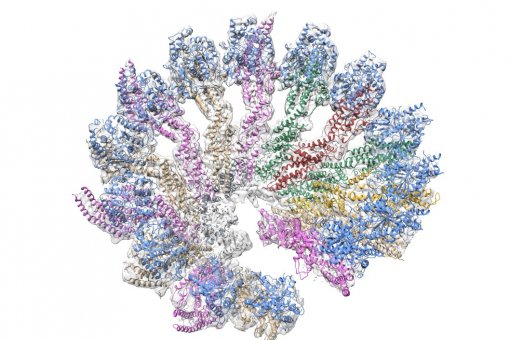Images
Contact

The finding of researchers at the Barcelona Supercomputing Center (BSC) and the Institute for Research in Biomedicine (IRB Barcelona) has been possible thanks to the calculation capacity of the MareNostrum supercomputer.
A team of researchers belonging to a joint programme between the Barcelona Supercomputing Center (BSC) and the Institute for Research in Biomedicine (IRB Barcelona) have discovered a code, unknown to date, in the genome. This new code plays a key role in regulating gene expression, that is to say the mechanism that governs when and in which tissue genes must be expressed. This research has been led by the investigators Modesto Orozco and David Torrents, who both work in the IRB Barcelona – BSC Joint Programme, in collaboration with the team directed by Francisco Javier Luque, at the University of Barcelona. Members of the National Institute of Bioinformatics (INB, acronym in Spanish) have also participated in this study.
Thanks to research performed during the last year and published in the last issue of Genome Biology, these scientists have localized the regions in the genome, named promoters, responsible for controlling gene expression. “Localizing these promoter regions is a difficult task because they show few defined sequence signals and the code that nature uses to detect them is highly complex”, explains Modesto Orozco, coordinator of the IRB Barcelona – BSC Joint Programme. This finding is of great relevance for several fields of biology: molecular, evolutional and biomedical.
Furthermore, the discovery of these promoter regions is a first step to a better understanding of the structure of DNA and to establish the molecular bases of certain diseases, such as cancer. “Many types of cancer are caused directly or indirectly by poor regulation of the expression of certain genes that control cell growth (oncogene). To understand this poor regulation, it is necessary to determine the localization of the promoters that regulate these genes”, explains David Torrents, principal researcher with the IRB Barcelona – BSC Joint Programme.
The scientists have developed strategies to determine the physical properties of DNA at genomic level by means of molecular dynamics modeling. These strategies are possible thanks to the immense calculation capacity of the supercomputer MareNostrum, in Barcelona, one of the most powerful of its kind worldwide.
Reference Article:
Determining promoter location based on DNA structure first-principles calculations. Goñi JR, Pérez A, Torrents D, Orozco M. Genome Biol. 2007 (e-pub ahead of print)
IRB Barcelona
El Instituto de Investigación Biomédica (IRB Barcelona) trabaja para conseguir una vida libre de enfermedades. Desarrolla una investigación multidisciplinar de excelencia para curar el cáncer y otras enfermedades vinculadas al envejecimiento. Establece colaboraciones con la industria farmacéutica y los principales hospitales para hacer llegar los resultados de la investigación a la sociedad, a través de la transferencia de tecnología, y realiza diferentes iniciativas de divulgación científica para mantener un diálogo abierto con la ciudadanía. El IRB Barcelona es un centro internacional que acoge alrededor de 400 científicos de más de 30 nacionalidades. Reconocido como Centro de Excelencia Severo Ochoa desde 2011, es un centro CERCA y miembro del Barcelona Institute of Science and Technology (BIST).



